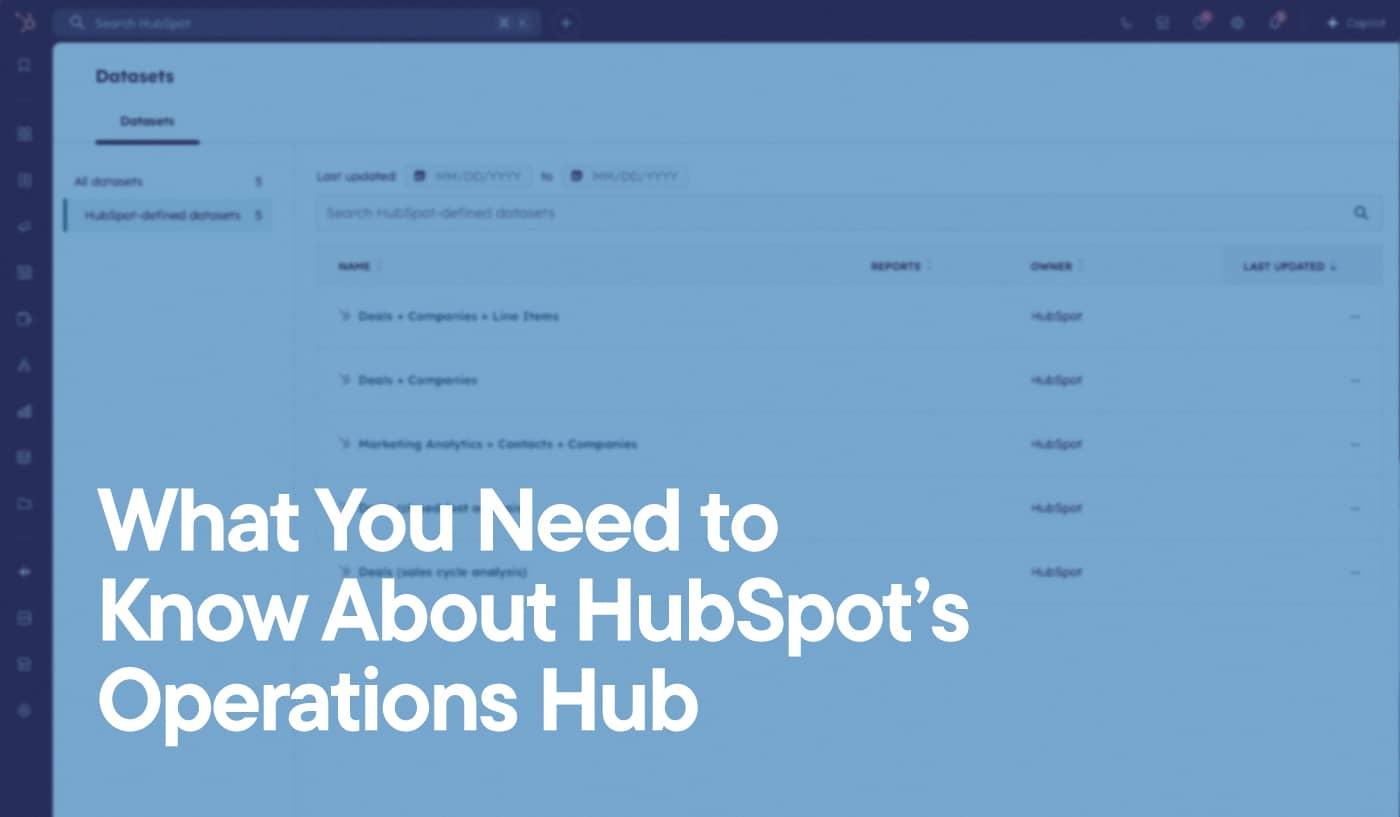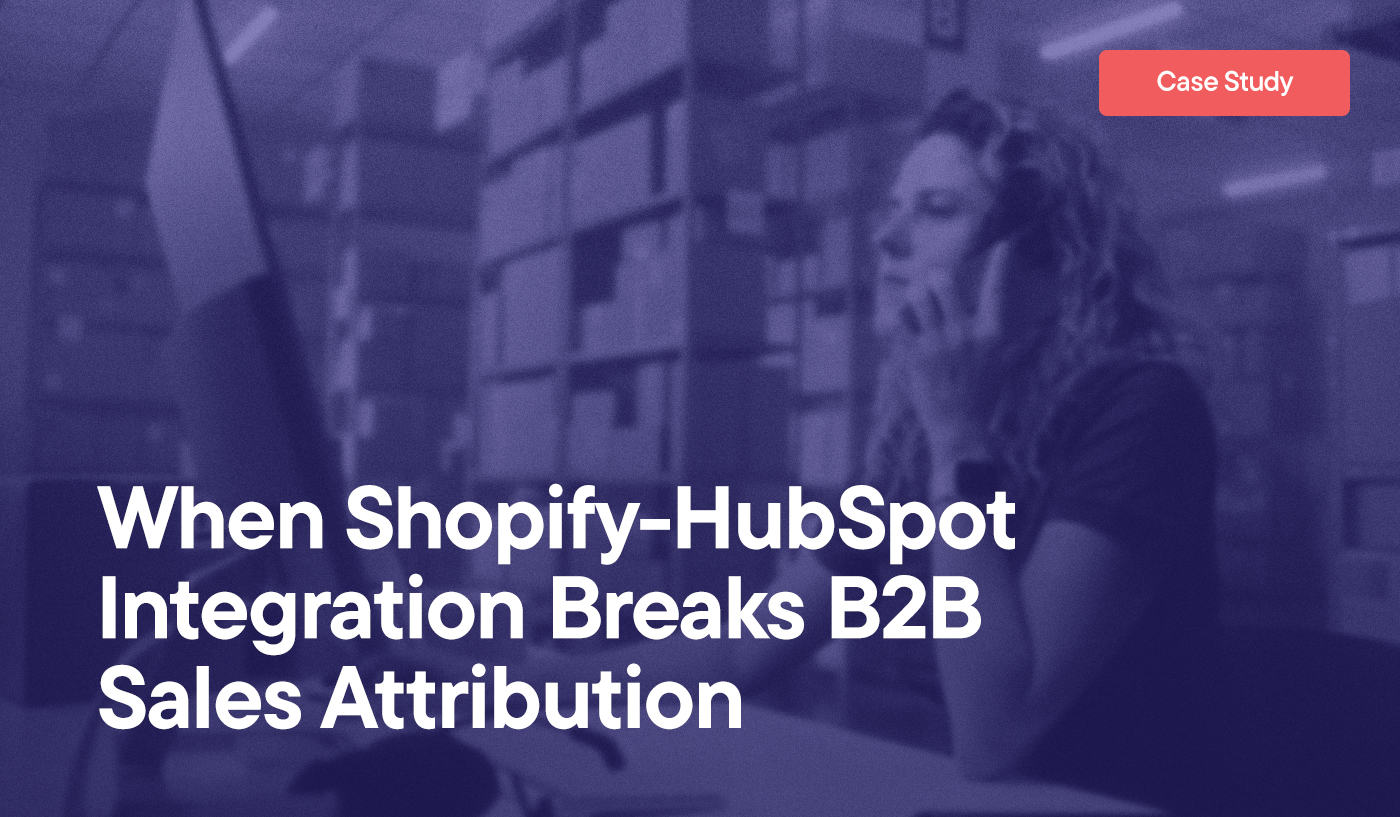Growing companies spend significant time manually collecting and reconciling data across their tech stack. Operations Hub transforms this wasted effort into a strategic advantage.
The Daily Reality
For most teams managing business systems, the routine looks something like this:
- Untangling complex system integrations
- Tracing steps through disconnected data
- Prioritizing issues by urgency rather than impact
- Managing reactive tasks instead of proactive improvements
And as companies scale, these challenges only intensify.
Three Critical Growth Barriers
HubSpot has identified three major obstacles that operations teams face during company growth:
1. Siloed Operations Create Experience Gaps
When sales, marketing, and service teams operate independently, customer experience suffers from inconsistent data and fragmented processes.
2. Scale Slows Innovation
As teams grow larger, the ability to implement changes and improvements becomes increasingly complex and time-consuming.
3. Unbalanced Investment Impact
Resources invested in one operational area often fail to deliver value across the broader organization, leading to inefficient growth.
Enter RevOps: A Unified Approach
HubSpot’s solution centers on Revenue Operations (RevOps)—a comprehensive approach that unifies sales, marketing, and customer service operations under a single mission.
But this raises a crucial question: How can organizations achieve this unity when teams operate with different data and systems?
This is where Operations Hub comes in.
Key Takeaways
Before we dive into the details, here’s what you need to know about Operations Hub:
- Unified Platform: Connects sales, marketing, and service operations through real-time data synchronization across 100+ integrations
- Data Management: Features two-way sync capabilities and automated data quality maintenance
- Custom Automation: Enables programmable workflows and AI-powered process automation
- Enterprise Ready: Includes advanced features like Snowflake integration and custom datasets for larger organizations
What Is Operations Hub?
Operations Hub is a product line of software meant to take the aforementioned challenges off operations professionals’ plates.
It enables users to sync customer data across over 100 integrations and automate business processes, freeing time to focus on innovation.
AI-powered workflows are among the newest bevy of features HubSpot has rolled out, automating complex processes like lead routing and predictive deal scoring.
“With Operations Hub, you have the tools you need to connect all your apps, sync and clean your customer data, and automate business processes, turning operations into a strategic arm of your business—not a reactive one,” HubSpot outlines in an FAQ addressing its many advantages.
The seven major benefits of Operations Hub include:
- Integration of Siloed Operations Teams Into One
- Building a Unified Mission & Strategy
- Aligning Systems, Data & Enablement to Overcome Speed Issues
- Enable More Customer-First Innovation
- Scalability
- AI/automation
- Enterprise-grade Data Management (e.g., Snowflake Integration, Datasets)
Each of these advantages is thanks to one or more of the hub’s three core features.
The Three Major Components of Operations Hub
Data Sync
When organizations try to connect HubSpot with their tech stack, they face a complex web of integrations. Each connection point introduces potential data inconsistencies and manual maintenance requirements. Here’s how Operations Hub’s Data Sync creates a streamlined, automated flow of information across your essential business systems:
The scale of this challenge is significant: large enterprises manage an average of 410 SaaS apps, while medium-sized businesses juggle 192, per a 2024 report from Statista. To address this growing complexity, HubSpot acquired integration platform PieSync in 2019, developing it into a powerful system for 24/7 real-time, two-way synchronization between applications.
With Operations Hub’s Data Sync, you can sync contacts, leads, and companies with more than 100 integrations including Google Contacts, NetSuite, MailChimp, and ERP systems such as SAP and payment processors like Stripe, among others. HubSpot will continue adding integrations over time, ensuring company data remains consistent, accurate, and up to date across as many platforms as possible.
Through Data Sync, users utilize two-way and historical syncing and custom field mapping. Decide where every piece of data will go and use filters to sync specific database segments. This centralized approach has proven effective at reducing app sprawl while maintaining data integrity across systems.
Data Quality Automation
None of this integrated information is useful if unclean and inconsistent, so Operations Hub tidies your data, including date properties, phone numbers, contact names, and more.
Its AI-driven anomaly detection and automated duplicate merging via the Data Quality Command Center, eliminate time-consuming cleanup. Simply add the Data Quality Automation action into your workflows to automatically format.
For instance, if several names are all capitalized, while others are all lowercase, the system ensures uniformity, capping them all. Data Quality Automation is also effective in altering dates to a consistent style.
“If you’re using integrations powered by data sync, that cleaned data can flow into all of your other apps as well, giving your team the high-quality data they need to do their jobs in all their apps,” HubSpot Product and Solutions Marketer Jan Bogaert writes in “The Ultimate Guide to Operations Hub.”
Programmable Automation
Before Operations Hub, users were only able to access a list of predefined workflow actions, meaning they weren’t able to create more advanced and customized flows.
Now, with Operations Hub, users have the power to create custom code actions using JavaScript. It’s worth noting, the enterprise tier adds Python support and generative AI code suggestions for complex workflows
Programmable Automation includes three automated actions: “a new ‘custom code’ action in workflows, the ‘create a webhook’ action in workflows, and custom-coded bot action in chat flows,” according to HubSpot.
Since its launch, HubSpot has seen programmable Automation put to use for renewals, lead routing, ticket assignment, data enrichment, cross-object associations, commission calculation, deal/project IDs, and numbering.
In short, Programmable Automation makes complex business processes easier and provides greater efficiency and flexibility through a cost-effective solution.
Free HubSpot Portal Audit
Unlock the Full Potential of Your HubSpot Portal
Request A Portal Audit arrow_forwardHubSpot’s Operations Hub Enhanced Data Management Features
There are also a few recently developed data management tools that further improve the Operations Hub experience.
Data Quality Command Center
HubSpot designed this tool to help you evaluate and address potential data quality issues within the HubSpot CRM. It provides insights into properties, records, and data synchronization integrations.
The Data Quality Command Center monitors the total number of properties and identifies issues such as empty, unused, or duplicate properties. It does this by analyzing contact and company records for inconsistencies and evaluating the health of data synchronization integrations.
If you have any concerns over how to best leverage it, your HubSpot implementation partner should be your first point of contact. That’s why they’re there.
Data Quality Automation
Automation continues to proliferate. For HubSpot’s Operations Hub that means your CRM data is automatically standardized and cleaned, including formatting names, standardizing phone numbers, and cleaning address fields.
This reduces manual data cleanup tasks, ensuring consistent data across all your platforms.
Programmable Automation
Your more complicated workflows can be simplified or automated, as well, with Programmable Automation. This delivers advanced workflows using custom-coded logic to manage complex data tasks, such as auto-enriching records and dynamic data validation.
Your data integrity and flexibility processes become that much better.
Datasets (for Enterprise)
As far as enterprise-level Operations Hub features go, you get a few extra bells and whistles.
Datasets enable creation and customization for advanced data analysis and reporting, facilitating more detailed insights tailored specifically to your business metrics—ensuring alignment across the organization.
These features collectively enhance data management by ensuring data accuracy, consistency, and actionable insights, which are crucial for effective business operations and decision-making.
How AI Is Automating Your HubSpot Operations Hub Experience
Last year was a monumental year for artificial intelligence (AI), and 2025 will be even bigger. HubSpot has baked a few AI-powered features into Operations Hub.
In the age of AI, businesses need to adopt now.
AI Assistant for Workflow Automation
HubSpot introduced an AI Assistant in April 2024 to simplify building workflow actions. This tool helps you create more complex workflows without needing extensive technical knowledge. This enhances automation capabilities by making it easier to set up custom workflows, which can automate tasks like data updates and lead assignments.
AI-Powered Automation
HubSpot now offers AI-built workflows that can automate business processes by defining enrollment criteria, setting up automated actions, and configuring alerts and triggers. This increases efficiency by automating repetitive tasks and improves data accuracy and consistency.
For instance, AI can be integrated into workflows to automatically qualify leads based on predefined criteria such as engagement history, company size, or industry. This process uses predictive models to assess the likelihood of a lead converting into a customer.
Predictive Deal Scoring
This AI-driven feature assesses deal health based on factors like deal velocity, rep activity, and buyer engagement which helps your sales teams prioritize leads more effectively. This refocuses your team’s attention on the most promising deals, optimizing sales performance and pipeline management.
Imagine you’re a mid-sized software company that uses HubSpot as its CRM platform. Your sales team manages a large pipeline with multiple deals at various stages. However, they face challenges in prioritizing deals effectively and maintaining accurate sales forecasts.
By integrating Predictive Deal Scoring into your HubSpot CRM, you can now analyze historical data, customer behavior, and sales activities to assign a score to each deal, indicating its likelihood of closing. As a result, you transform sales operations by providing actionable insights, improving forecasting accuracy, and enhancing resource allocation.
Transform Your Operations Hub with Hypha
As HubSpot platform specialists, Hypha delivers comprehensive Operations Hub solutions through:
Platform Configuration & Integration
- Custom API integrations and data syncing across your tech stack
- Seamless migration and implementation of Operations Hub features
- Advanced workflow automation setup and optimization
AI Implementation & Optimization
- AI Assistant workflow configuration
- Predictive Deal Scoring setup and training
- Custom AI-powered automation development
Strategic Support
- Dedicated HubSpot platform specialists
- Ongoing optimization and maintenance
- Training and enablement for your team
Contact our team of integration experts to unlock the full potential of Operations Hub and accelerate your business growth through AI-powered automation and seamless data management. Our flexible engagement models ensure solutions perfectly matched to your needs.
This blog is updated as of 2/27/25. HubSpot’s product are constantly changing. We strive to update our blogs accordingly.




